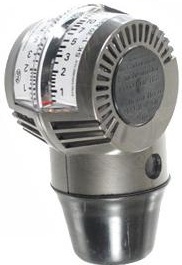- Location
- Washington
Reaching out for some tips on tuning my rebuilt engine.
I have a DASA 950 that was modified with a 4mm stroke , running black jack 44s with a zeeltronic(wax curve) b-pipe, pump gas, vforce 3 reeds.
Engine has been reassembled and is operating. I ran 10 gallons of 25:1 mixed gas for break in and then took it back to 50:1. I have ran about a 7 gallons of the 50:1
First time breaking a engine in, not sure how quickly the cylinders should seat up but compression is 160psi on front cylinder and 150psi on the rear (my gauge is quite old so not sure if the readings are accurate but used them for comparison)
I'm running Blackjack 44s with 125 jet on high and I believe a 30 on low, but it is hard to read the print
The ski will idle ok buts seems a little rough in my opinion. Playing around and trying some things I found that when I lean out the low jets the idle roughness reduces but seems to exaggerate the roughness when transitioning to the high end
Performance improved when I leaned out the high jets as well, but still having some low to mid range roughness
Currently have my highs at 3/4 turn and my lows at 7/8 turn
Anyone else experience similar issues? Is this common with the bigger piston engines? Any other 950s with similar set ups? Any suggestions for carburetor settings?
I also see the white oil/water stuff on the intake to the carburetors, this was present before the engine was rebuilt but I'm not experienced enough to know if this is typical - thought it was an indicator for reeds not sealing up, but current setup has brand new reeds?
Thanks in advance
I have a DASA 950 that was modified with a 4mm stroke , running black jack 44s with a zeeltronic(wax curve) b-pipe, pump gas, vforce 3 reeds.
Engine has been reassembled and is operating. I ran 10 gallons of 25:1 mixed gas for break in and then took it back to 50:1. I have ran about a 7 gallons of the 50:1
First time breaking a engine in, not sure how quickly the cylinders should seat up but compression is 160psi on front cylinder and 150psi on the rear (my gauge is quite old so not sure if the readings are accurate but used them for comparison)
I'm running Blackjack 44s with 125 jet on high and I believe a 30 on low, but it is hard to read the print
The ski will idle ok buts seems a little rough in my opinion. Playing around and trying some things I found that when I lean out the low jets the idle roughness reduces but seems to exaggerate the roughness when transitioning to the high end
Performance improved when I leaned out the high jets as well, but still having some low to mid range roughness
Currently have my highs at 3/4 turn and my lows at 7/8 turn
Anyone else experience similar issues? Is this common with the bigger piston engines? Any other 950s with similar set ups? Any suggestions for carburetor settings?
I also see the white oil/water stuff on the intake to the carburetors, this was present before the engine was rebuilt but I'm not experienced enough to know if this is typical - thought it was an indicator for reeds not sealing up, but current setup has brand new reeds?
Thanks in advance

